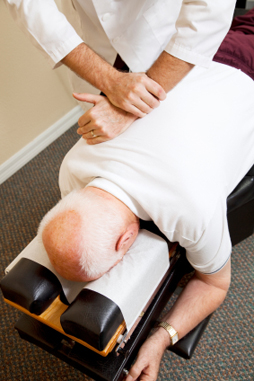Analysis and Diagnosis
- Details
- Category: Our History
- Published on Friday, 12 July 2013 15:33
- Written by Administrator
- Hits: 4171
 At Pain Chiropractic Clinic we offer diagnosis and treatment of a variety of common conditions including:
At Pain Chiropractic Clinic we offer diagnosis and treatment of a variety of common conditions including:
Back pain • Neck pain • Headaches • Sports injuries
Tennis elbow • Leg and knee pain • Hand and foot problems
Shoulder pain & Frozen shoulder • Whiplash
Hip & knee osteoarthritis • Patellofemoral pain syndrome
Plantar Fascitis
One of the strengths of chiropractic is its diagnosis especially with neuro-musculo-skeletal problems. Chiropractors learn orthopedic testing, nuerological testing and skeletal testing using radiology. I usually diagnose patients for disks, menscus and rotator cuff tears by examining the joints. So far all my diagnosis have been verified with MRI.
Neck, back, joints can have many different diagnoses. And it is not uncommon for a patient to have more than one condition at the same time.
All chiropractors at the ISIS Chiropractic Clinics are trained in medical diagnosis, often termed general diagnosis, which means that we are trained to identify underlying medical pathology.
There are many non-muscle and joint problems that can cause pain (and other symptoms), so when you come in to our clinics we do what is called a triage, take a medical history, take your blood pressure and temperature followed by a physical, orthopaedic, chiropractic and neurological examination.
When it comes to back pain coming from the spine being referred to other areas of the body, it is particularly important to be able rule out other conditions, especially if they are not suitable for chiropractic treatment and need urgent medical referral.
The Diagnosis
When you come in to our clinic the chiropractor’s first goal is to find out what is wrong and to make a diagnosis.
The diagnosis determines which type of treatment you need and what needs to be addressed. One of the most important things for the chiropractor to do is to identify the pain producing structure(s), in order to be able to direct the treatment accurately to reduce the pain and promote healing as quickly and effectively as possible.
The Differential Diagnosis
When a diagnosis is being made it is important to make a, so-called, differential diagnosis.
That means to make a list of all the possible causes of the symptoms first then perform the tests and examinations needed to establish which of all the conditions is responsible for the symptom(s). Also, taking into account the patients age, gender and medical history and then rank them in the order of likelihood.
It might seem far from giving a specific diagnosis to have a whole group of causes to choose from, but this is to ensure that the chiropractor has not forgotten to rule out other possibilities.
This way of diagnosing a condition is considered the most effective and accurate way and is used in medicine. It should be used by anybody who attempts to diagnose a patient’s symptom(s).
To just ask you where the pain is and ask you to bend forward to touch your toes is not enough to find out what is wrong!
If you are ever in doubt that your physician has done a thorough job, ask him/her what their differential diagnosis is and how they came to their conclusion.
Spinal Pain
When it comes to spinal pain, neck pain, mid-back pain and lower back pain there are many different diagnoses. And it is not uncommon for a patient to have more than one condition at the same time.
Here is a list of the some common back conditions encountered in chiropractic practise: Facet joint syndrome, Sacroiliac joint syndrome, Disc herniation (Slipped disc), Central stenosis, Lateral dynamic stenosis, Piriformis syndrome and Modic changes.
The term syndrome is a term used to encompass a selection of symptoms associated with the injury of the facet or sacroiliac joint. Which includes muscle spasm and referred pain. The muscles involved and the area of referred pain can vary from case to case.
Lower back pain can be a sign of more serious illnesses. Rare Causes of Lower Back Pain include problems such as cancer, infections and abdominal pathology. But the sooner you find out what is wrong the sooner the most appropriate and best treatment can be given.
